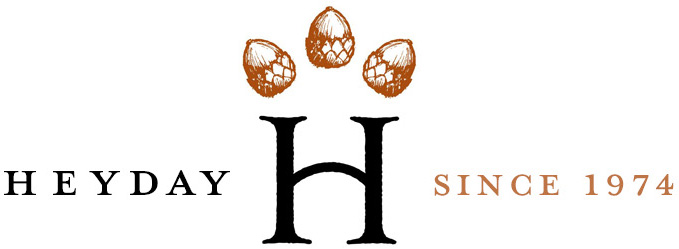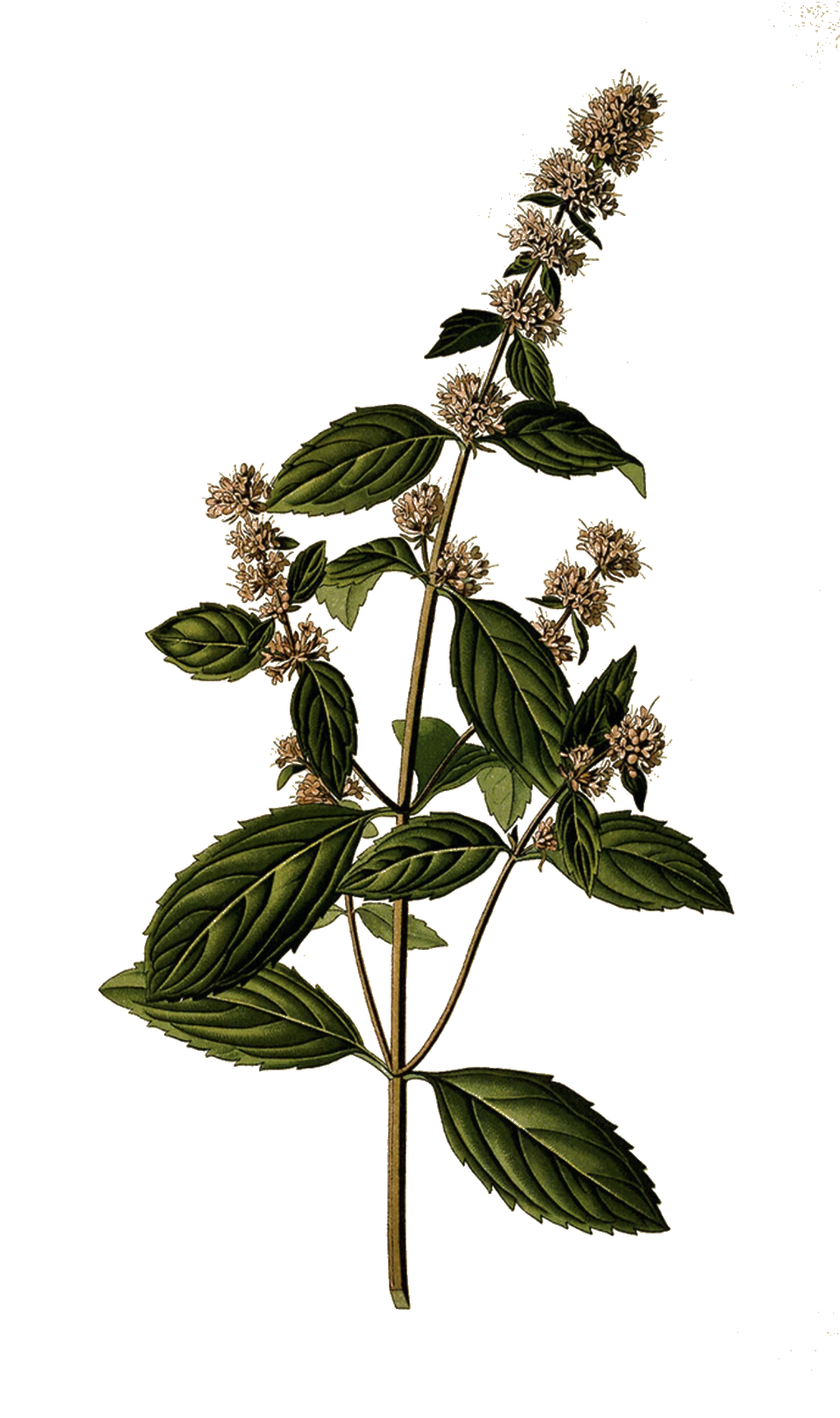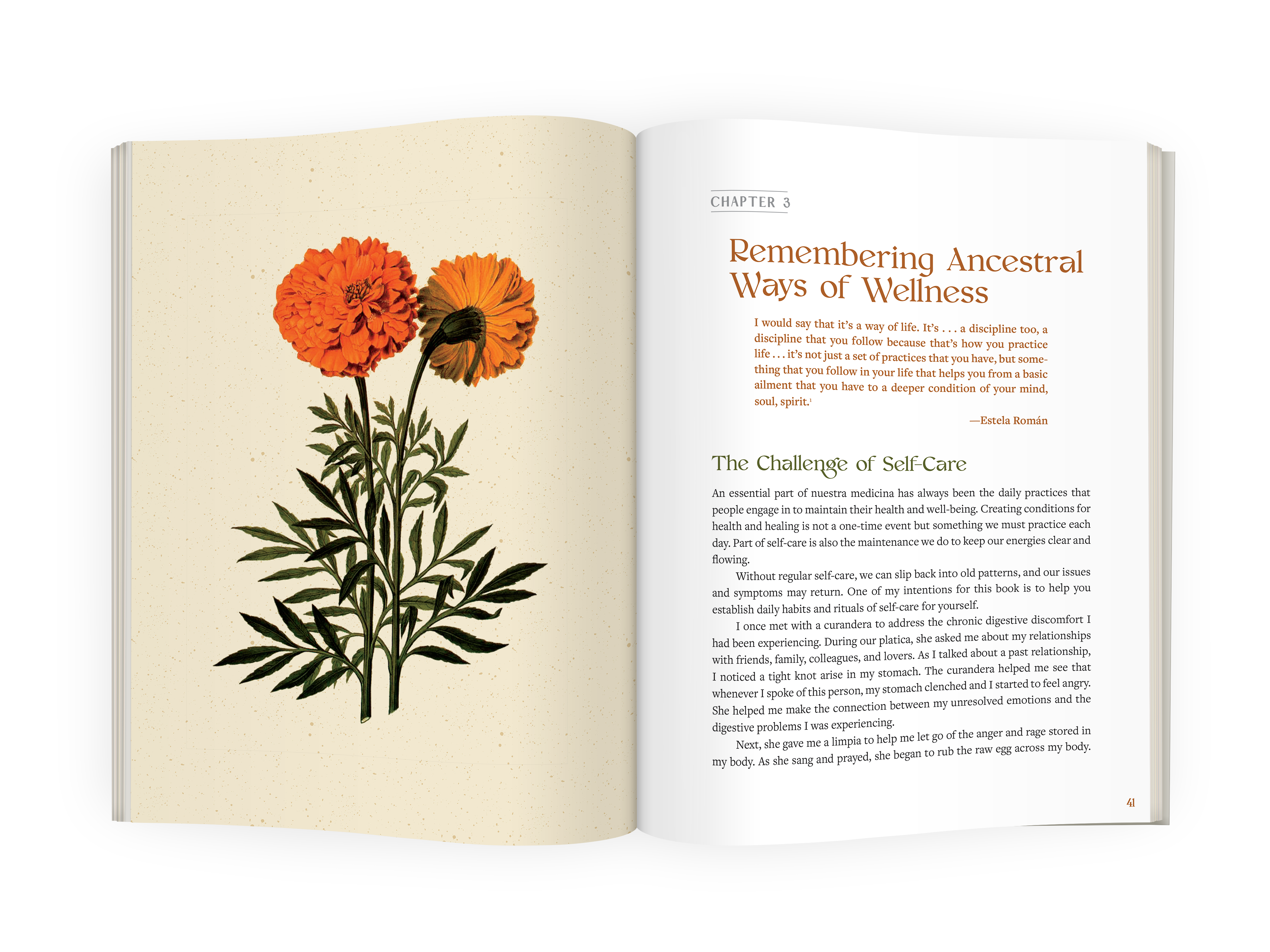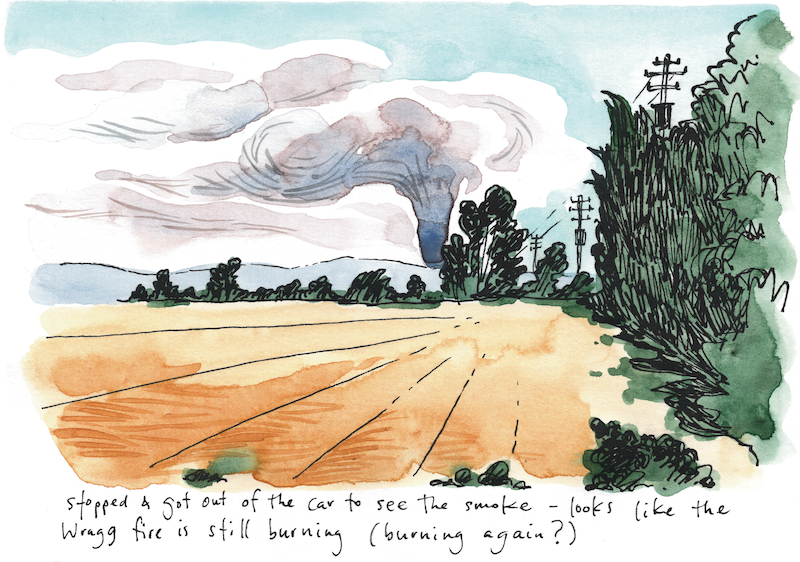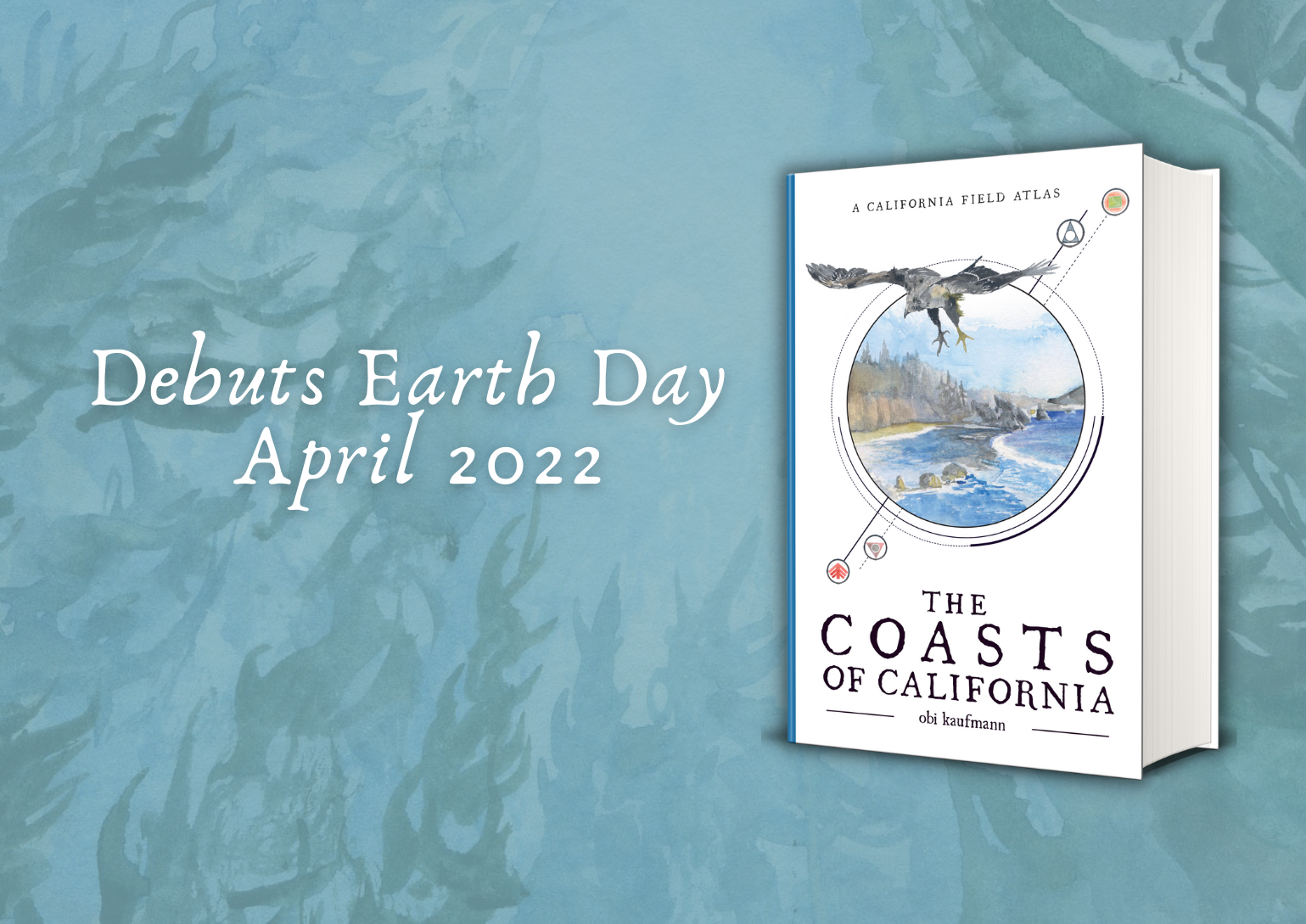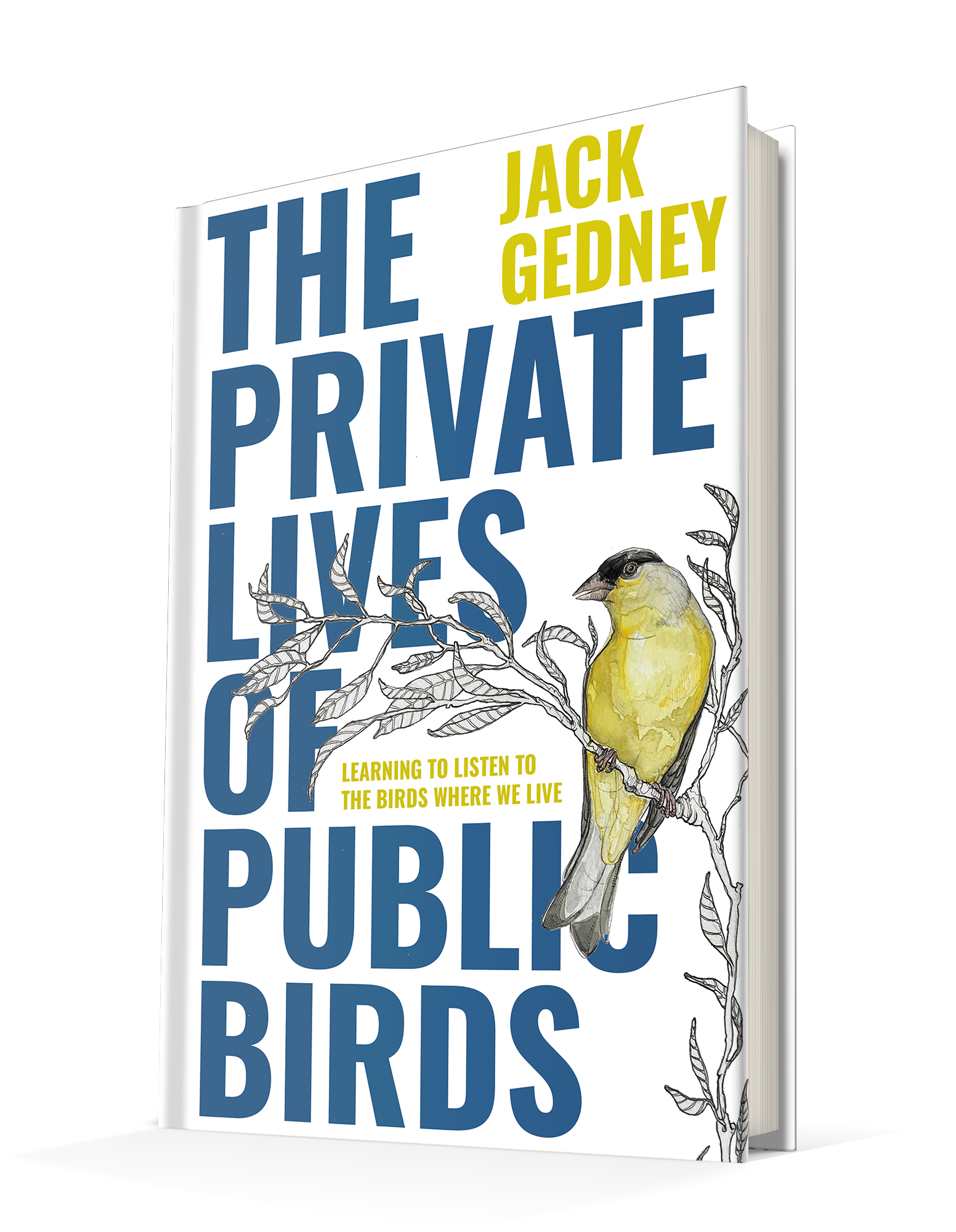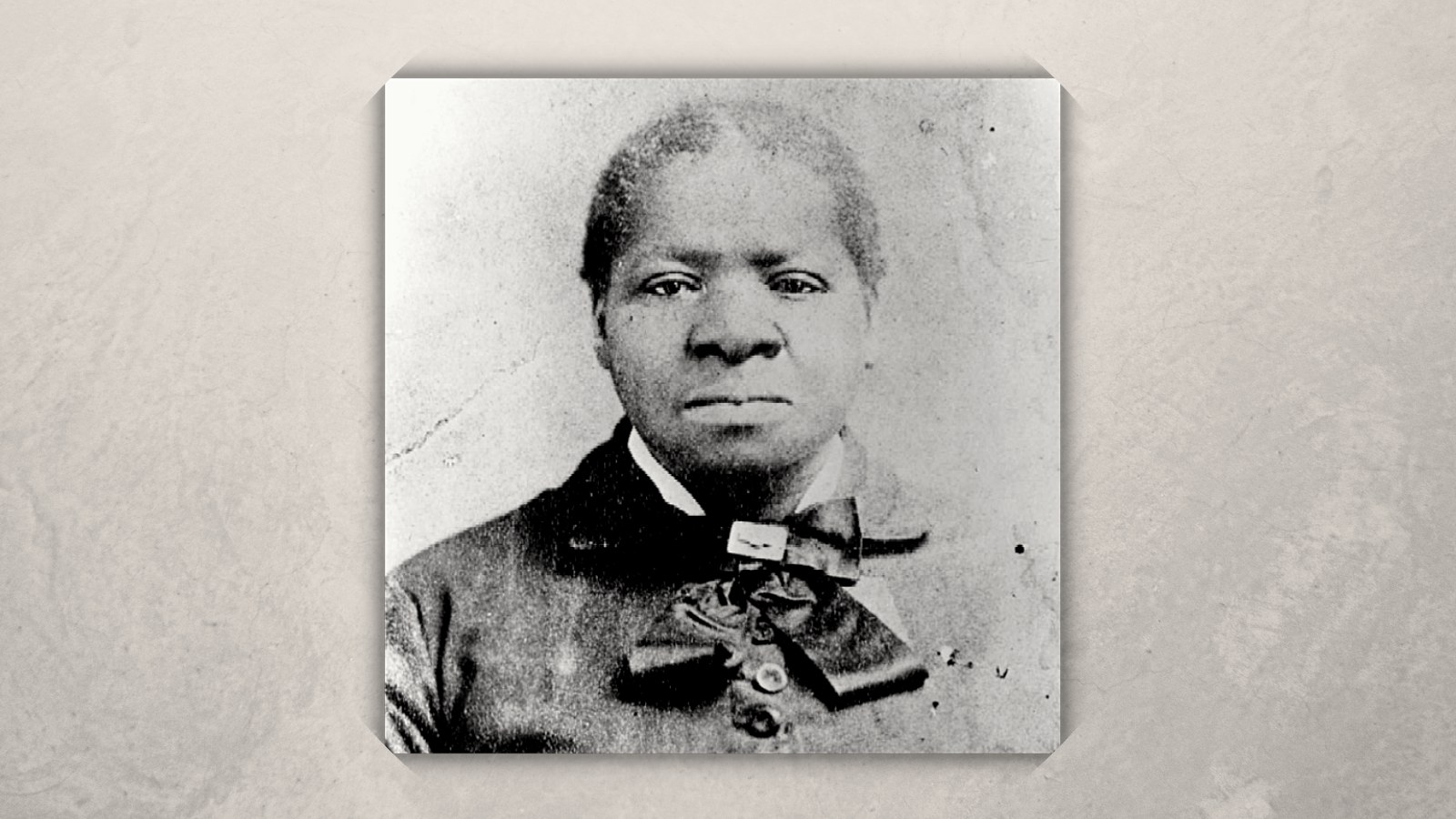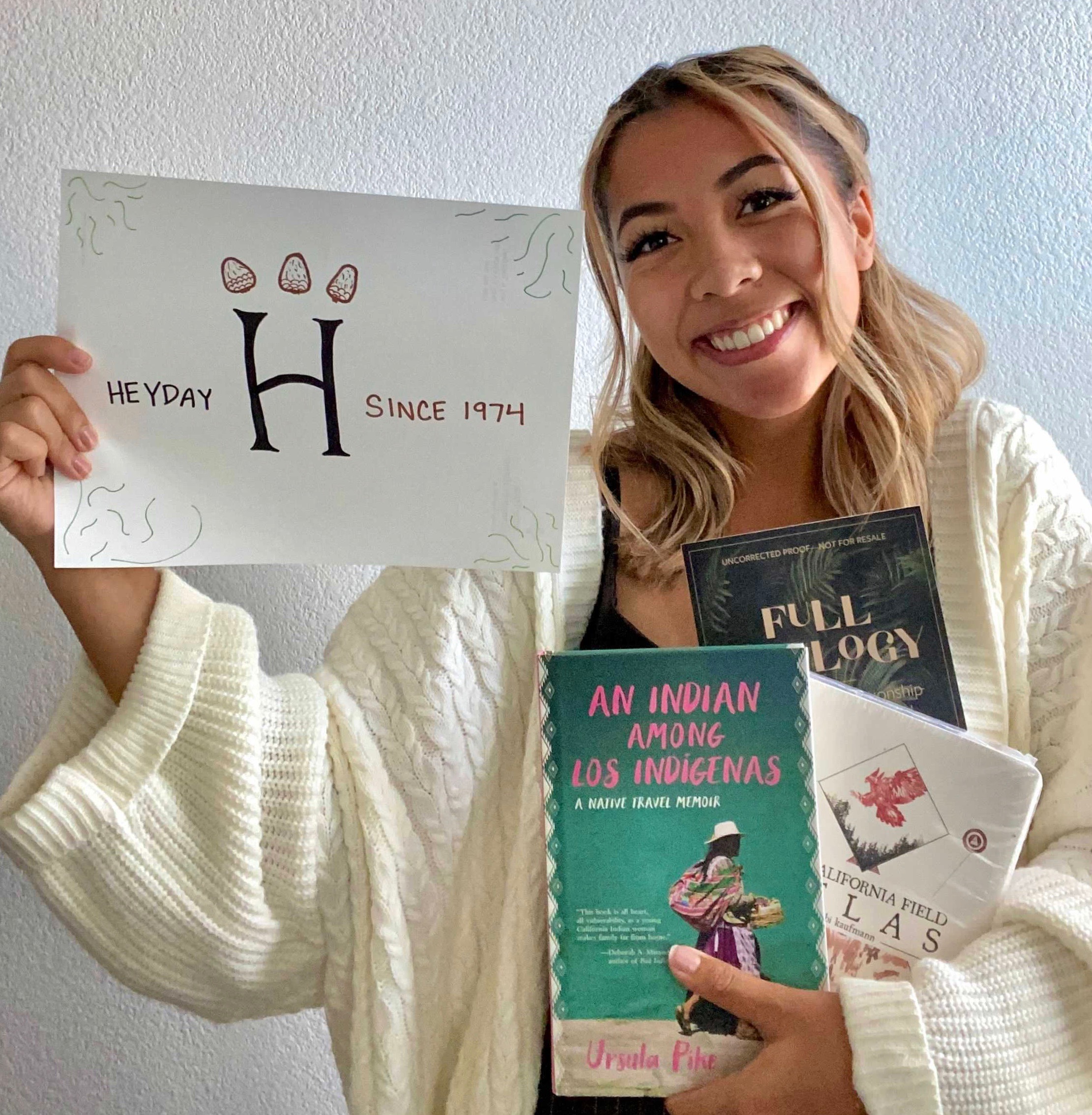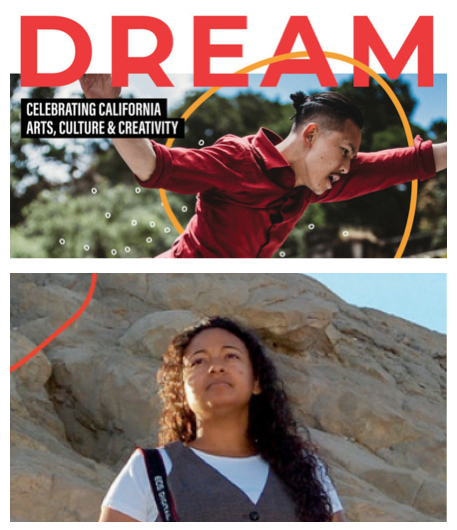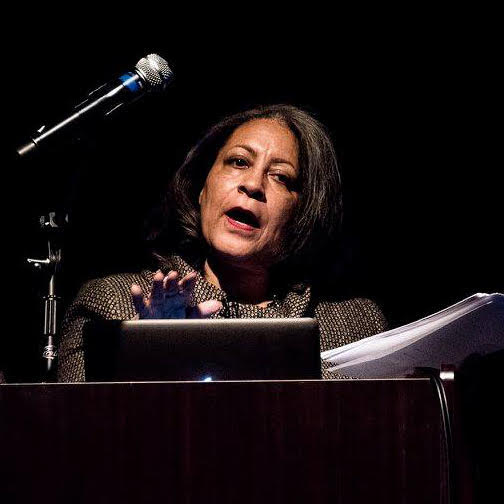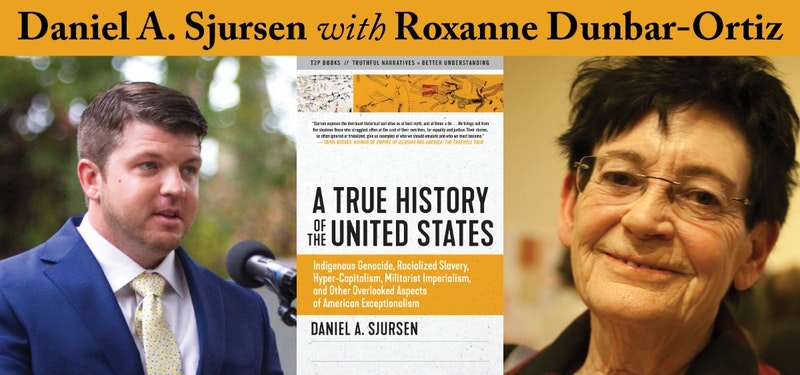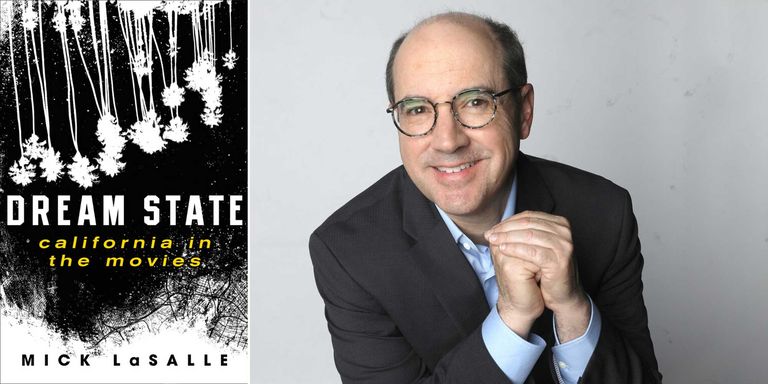Learning to Love Plants
Learning to Love Plants
An excerpt from Atava Garcia Swiecicki's The Curanderx Toolkit on opening our minds and hearts to the plant world.

Plants tell their stories not by what they say, but by what they do.
—Robin Wall Kimmerer
It is hard to describe the feelings of fondness, love, and gratitude I have for the plant beings in my life. As humans, we are used to feeling love and affection for other human beings. For many, this love can extend to our animal friends as well. Yet how can we learn to love a plant?
Plants differ more from us than do animals, so developing a relationship with them requires more subtlety. Plants do not have eyes or ears or hearts. They do not move around like humans, animals, insects, and birds. Plants are sessile, which means that they are permanently rooted in one place.
For humans who have been separated from their Indigenous consciousness, it may be easy to assume that since plants do not share common characteristics with the animal kindom, they lack intelligence. (I prefer the word kindom to the standard kingdom because it doesn’t impart a patriarchal and hierarchical bias.) However, quite the opposite is true. Plants are extremely intelligent. They not only share with us the same five senses of sight, sound, touch, taste, and smell, but they actually possess fifteen more senses!
We can learn to love plants simply by spending time with them. As healers, we build our connection to plants as we begin to consciously interact with them. As we take walks in nature, as we tend to our gardens, as we cook or make medicine with plants, over time our relationship to plants will blossom (pun intended!).
The more I learn about plants and the more I strengthen my relationships with them, the more I am convinced that they possess unconditional love for us humans. Despite all the harm human beings have inflicted on the earth, plants are still here to nurture and support us. Plants give us food, clothing, and shelter. The herbal medicines of the plant world help our bodies stay healthy and heal us when we’ve been sick or injured. Herbs can help us relax and sleep, and they can also give us energy when we’re feeling depleted. They can bring calm when we are feeling stressed, and they can lift our spirits when we are depressed. Herbs are very effective in treating trauma, which in curanderismo we call susto. They can help call the soul back into the body. Herbs comfort us when we are suffering from heartbreak or loss. Herbs assist and support us human beings in all stages of life, from birth to death.
As human beings, we carry the memory of plants in our DNA. All of our ancestors have been interacting with plants for countless generations. Our ancestors used plants for food, shelter, and clothing; in ceremony; and for medicine. Before our ancestors could go to a drugstore to buy aspirin for a headache, they learned to identify which plants growing around them could be helpful in relieving pain. The genetic memory of our plantcestors lives in our bones and blood.
Take a moment to pause and think about the ways plants have supported your life. Is your home built from trees? Is your clothing made of cotton? What is on your dinner plate? What is in your medicine chest? What plants are growing in your garden or in your neighborhood? Do you have a favorite tree you like to visit? Is there a place in nature that brings you a sense of peace and calm?
As we open our minds and hearts to the plant world, we begin to recognize all that they give us each day, unconditionally. As we take in the generous gifts from the plant kindom, it is natural to begin to feel care and to love them. You don’t have to work hard at it!
In Atava Garcia Swiecicki’s The Curanderx Toolkit she graciously offers thirteen medicinal chapters that each spotlight community healers who illuminate the heart of ancestrally rooted rituals, relationships, and recipes. This book is a gift to all curanderx on their path. It is full of wisdom, meditation, and guidance to remembering ancestral traditions and wellness ways of life. Through the voices of elders we receive original instructions on how to build right relations with plants and the earth. Swiecicki beautifully weaves her journey of growing with her garden while providing scientific and spiritual knowledge of the plants.
—Susy Zepeda, author of Queering Mesoamerican Diasporas: Remembering Xicana Indígena Ancestries
Debuts July 2022 — The Curanderx Toolkit
FOR IMMEDIATE RELEASE
A HANDS-ON GUIDE TO CURANDERISMO OFFERS A ROADMAP OF RESILIENCE
Healer and herbalist Atava Garcia Swiecicki takes readers on a journey to reclaim the knowledge and power of Latinx folk traditions for everyday healing

BERKELEY, CALIF. — Atava Garcia Swiecicki, founder of Oakland's Ancestral Apothecary, has dedicated her life to the study of curanderismo, a healing tradition rooted in Indigenous communities of the Latinx diaspora. Growing up a child of immigrants, Garcia Swiecicki lost much of her family’s healing practices to assimilation and colonialism. In her three-decade quest to piece together the fragments of her past, Garcia Swiecicki has sought wisdom from teachers, plants, dreams, and ancestors. Her debut book, The Curanderx Toolkit (on sale July 12) acts as a roadmap of resilience for those who have lost connection with their ancestral roots and those who are ready to reclaim them.
“This book documents a healing movement led primarily by BIPOC women, queer, trans, and nonbinary folks,” says Garcia Swiecicki; “This book is a story of personal and collective healing. It is about remembering the precious knowledge that our ancestors left for us and learning how to apply that knowledge in our lives today for healing, transformation, community wellness, and social justice.”
Whether through the practice of grounding, creating herbal tinctures, or quieting our minds to listen to our own intuition, this book helps us see that the tools for healing have always been just under our feet. The Curanderx Toolkit features more than twenty-five plant profiles designed to help readers incorporate ancient herbal wisdom into everyday life.
Framed with breathtaking illustrations, poems, and medicinal recipes, you’ll dive headfirst into a historical healing practice that colonialism has too often tried to silence. Garcia Swiecicki draws upon the support of her ancestors, her teachings, and her gifts to ignite and empower the healer within us all.
Media Contact:
Kalie Caetano
Marketing & Publicity
publicity@heydaybooks.com
For review copies, feature interest, and interview and image requests, get in touch!
Keep up with Heyday on social:

About the Author
Atava Garcia Swiecicki is guided by her dreams and her Mexican, Polish, Hungarian, and Diné ancestors. She received a BA in feminist studies from Stanford University and a master’s degree from the Indigenous Mind Program at Naropa University in Oakalnd. Atava has studied healing arts extensively for over thirty years and has been mentored by herbalists, curanderas, and traditional knowledge keepers. She works as a clinical herbalist and teacher. She is the founder of the Ancestral Apothecary School of Herbal, Folk, and Indigenous Medicine on Ohlone territory in Oakland, and she currently lives in Tewa Pueblo territory in Albuquerque. Her personal website is ancestralapothecary.com, and the website for her school is ancestralapothecaryschool.com.
Praise for The Curanderx Toolkit
"I had the good fortune to take Atava’s Curandera's Toolkit class in Oakland, California, many years back and it has transformed my understanding of the power of plant medicine. With this book, Atava is generously sharing her knowledge with an even wider community. This book is a gift to everyone who wants to deepen their connection to ancestral wisdom.”
—CATRIÓNA RUEDA ESQUIBEL, Co-author, with Luz Calvo, of Decolonize Your Diet: Plant-Based Mexican-American Recipes for Health and Healing
“In Atava Garcia Swiecicki’s The Curanderx Toolkit she graciously offers thirteen medicinal chapters that each spotlight community healers who illuminate the heart of ancestrally rooted rituals, relationships, and recipes. This book is a gift to all curanderx on their path. It is full of wisdom, meditation, and guidance to remembering ancestral traditions and wellness ways of life. Through the voices of elders we receive original instructions on how to build right relations with plants and the earth. Swiecicki beautifully weaves her journey of growing with her garden while providing scientific and spiritual knowledge of the plants. I want to assign this book in my undergraduate Decolonizing Spirit course as it can provide students with a practical guide and respectful entry into curanderismo and traditional healing.
—SUSY ZEPEDA, author of Queering Mesoamerican Diasporas: Remembering Xicana Indígena Ancestries
"Without love, gratitude, reciprocity, knowledge, and service to one’s community, a curanderx’s path is empty. The Curanderx Toolkit deeply embodies these principles and more. While there are books written that describe purification rituals without care for a reader’s lack of experience and the possibility that information shared in that manner could cause harm, Atava Garcia Swiecicki generously shares grounded ways of using curanderismo practices with care and discernment. This book guides readers to learn about and nurture deep relationships with herbal allies, and Atava teaches readers to reconnect with Indigenous healing practices and their own luminous nature in a way that honors the ancestors and the path of curanderismo as a way of life. It is good medicine.”
—GRACE ALVAREZ SESMA, curandera and founder of Curanderismo, the Healing Art of Mexico
“In her book The Curanderx Toolkit, Atava has revived a passion of mine: traditional medicine. I am so pleased that she has addressed herbal history and knowledge as well as medicine making, energetic/spiritual cleansings and many more topics dear to me. I congratulate Atava on reclaiming our traditional medicinal culture.”
—ELISEO "CHEO" TORRES author of Curanderismo: The Art of Traditional Medicine without Borders
“From daily life to times of crisis, the ancestral plant wisdom in The Curanderx Toolkit will gracefully carry its readers through life. This is an inclusive and expansive guide for collective healing that many are searching for today.”
—ALMILA KAKINC, author of The Thirlby: A Field Guide to a Vibrant Mind, Body, and Soul
“I've always felt like I've been on the outside looking in on traditional healing practices. This book has deepened my understanding of herbal medicine and served as an affirming entrypoint to start investigating my personal healing lineage. If you are interested in reconnecting to earth medicine, yourself, and your ancestors, this is a wonderful place to start.”
—DALIA KINSEY, author of Decolonizing Wellness: A QTBIPOC Guide to Escape the Diet Trap, Heal Your Self-Image, and Achieve Body Liberation
The Curanderx Toolkit
Reclaiming Ancestral Plant Medicine and Rituals for Healing
by Atava Garcia Swiecicki
ON SALE JULY 12, 2022
304 pages, full-color illustrations and photos
ISBN: 978-1-59714-571-8

Debuts August 2022 — The Cold Canyon Fire Journals
FOR IMMEDIATE RELEASE
A New Book Rekindles Hope in the Face of Wildfire
As the West experiences ever more compressed fire cycles, one naturalist explores the lesser-told story of wildfire’s regenerative role in our ecosystem.

BERKELEY, CALIF — When the nature reserve at Cold Canyon went up in flames—a casualty of California’s raging fire seasons—Robin Lee Carlson embarked on a five-year journey to learn the legacy of the burn. What she saw challenged prevailing assumptions about the destructive impact of wildfire, and with a new fire season on the horizon, her debut book The Cold Canyon Fire Journals (on sale August 2) opens our eyes to see that beneath the burn and beyond our despair lies another story.
“Wildfire feels like loss, like a hole in our heart where a beautiful, mature ecosystem used to be,” says Carlson, “But when fire comes at healthy intervals, far from being an unnatural cataclysm, it is an essential part of western habitats’ normal life. The damage and destruction of fire are essential for the vigorous flowering to come.”
Drawing on natural science, years of patient observation, and richly realized field sketches, Carlson’s study of the canyon—a site that sees over 65,000 visitors a year—reveals how wildlife survives and thrives in the crucible of wildfire. From flame-repelling foaming newts to fire-following wildflowers, her portrait of a land re-sprouting from the ash illuminates the necessity of disturbance and renewal forged by flame. In this text she explores the purposes of good fire—well understood by Western Native Americans whose practices of prescribed burns were abandoned and criminalized by modern fire management policies—as well as the threat of too-frequent fire, exacerbated by climate breakdown.
Helping us to see that fire is more than merely a destroyer, The Cold Canyon Fire Journals shows us that where there’s smoke, there’s hope—and that fire fits seamlessly into the natural world’s normal and necessary patterns of change. As Carlson reveals, familiarity and deeper knowledge of this much-feared force are the antidote to our grief.
Media Contact:
Kalie Caetano
Marketing & Publicity
publicity@heydaybooks.com
For review copies, feature interest, and interview and image requests, get in touch!
Keep up with Heyday on social:

About the Author
Robin Lee Carlson is a natural science writer and illustrator with degrees in evolutionary biology from UC Santa Cruz and the University of Chicago. Her artwork is grounded in observing and documenting the world around her as it unfolds. Visit her website at robinleecarlson.com and follow her on Instagram @anthropocenesketchbook.

Praise for The Cold Canyon Fire Journals
“The Cold Canyon Fire Journals is a celebration of a beauty that is larger than our comprehension. Our beloved world has burned and will burn again, Carlson tells us. But these pages offer a new way to relate to fire, kindling a respect for the natural world on its own terms. This is a book to cherish, to share, and to hold close when the skies once again darken with smoke.”
—KENDRA ATLEEWORK, author of Miracle Country
"The Cold Canyon Fire Journals is a captivating and matchless invitation to see, through Carlson’s incisive writing and charming artistry, a landscape recovering from fire. The relationship and lessons Carlson derives intertwine with her knowledge of global climate crisis and fire cycles—we are all better for being invited into this journey of recovery and reformation."
—BERONDA L. MONTGOMERY, author of Lessons from Plants
“That place can be a relationship is well understood; that fire is, less so. Robin Lee Carlson puts Cold Canyon, a place she knows intimately, together with fire, an oft-vexing visitor, and the result is a delightfully illustrated reimagining of the fire-catalyzed changes sweeping over us.”
—STEPHEN PYNE, author of The Pyrocene
“As we follow Robin Carlson's adventures and exploration in a post-fire landscape, we are given the raw footage from her nature journals and the deeper insights they inspire. We see the landscape through her eyes, tuned with the curiosity and insight of a scientist and the aesthetics and delight of an artist. This book is an authentic love song to the wonder, resilience and beauty of nature and the power of observation and inquiry.”
—JOHN MUIR LAWS, author of The Laws Guide to Nature Drawing and Journaling
"Robin Lee Carlson spent years field-sketching wildfire impacts, and in The Cold Canyon Fire Journals, she shows us that fire is not inherently bad but a process of change and renewal. Her detailed observations are important, and we can all learn from them as we seek to learn to live with fire in California."
—LAURA CUNNINGHAM, author of A State of Change
“In a time when those who love the living world must hold together joy and pain, beauty and loss, Robin Lee Carlson allows fire to become a teacher that opens both the physical landscape and her ‘imaginative sympathy.’ As a contemplation on ecological change, Cold Canyon reveals how a landscape forged in fire, over time and with loving attention, can deeply alter and revivify our perceptions.”
—GAVIN VAN HORN, author of The Way of Coyote and co-editor of Kinship
The Cold Canyon Fire Journals:
Green Shoots and Silver Linings in the Ashes
by Robin Lee Carlson
ON SALE AUGUST 2, 2022
288 pages, full color illustrations
ISBN: 978-1-59714-584-8

The Coasts of California by Obi Kaufmann Debuts Earth Day 2022
FOR IMMEDIATE RELEASE
Artist-adventurer and best-selling author Obi Kaufmann releases a new opus celebrating California's coastal ecosystems
The Coasts of California published by Heyday debuts on Earth Day, April 2022.

BERKELEY, CALIF — As the effects of climate breakdown become ever more acute, naturalist, poet-painter, and #1 San Francisco Chronicle bestselling author Obi Kaufmann releases The Coasts of California: A California Field Atlas (on-sale April 2022) to galvanize readers toward an ethical model of stewardship.
Featuring over 400 of the author’s signature watercolors and maps, Kaufmann invites readers on an odyssey from the rocky coast of Crescent City to the mosaic of the Channel Islands. In this ecological epic, Kaufmann explores where land meets ocean—where most of the human population of the state lives and where its natural world is most threatened—painting a vision for a more sustainable future along the way.


“It may be, and there is good evidence to suggest, that we are turning a corner (not unlike a hairpin turn on Highway 1),” says Kaufmann, “where we are compelled to face the other direction, away from old ideas about ‘using’ nature, and are now equipping ourselves with the tools and the perspective to augment, feed, and replenish those aspects of our precious natural legacy that have been dismantled or destroyed.”
Debuting on Earth Day, The Coasts of California will launch with a statewide book tour, including panel events at the LA Times and Bay Area Book Festivals, a short documentary in partnership with Alice Gu (The Donut King), a ticketed digital event produced by Wildbound PR, and book signings at independent bookstores from Point Reyes to Los Angeles.
Media Contact:
Kalie Caetano, Marketing & Publicity
publicity@heydaybooks.com
For review copies, feature interest, and interview and image requests, get in touch!
Keep up with Heyday on social:
About Obi Kaufmann
Obi Kaufmann is an artist-adventurer who has dedicated his life to studying California’s natural world and sharing his passion for its generous landscapes through the stroke of paintbrush and pen. He is the author of the genre-breaking, #1 San Francisco Chronicle best-selling book, The California Field Atlas (2017), The State of Water: Understanding California’s Most Precious Natural Resource (2019), and The Forests of California: A California Field Atlas (2020). When he is not backpacking, you can find the painter-poet at home in the East Bay, posting trail paintings at his handle @coyotethunder on Instagram. His website is coyoteandthunder.com.
Explore Obi's Works

The California Field Atlas
Winner of the California book award and a #1 San Francisco Chronicle best-selling opus.
An Atlas That Paints Wild California with a Watercolor Brush
Naturalist Obi Kaufmann maps the road less traveled

The State of Water
A philosophical examination of the inner workings of California's water systems and historic dry spell.
Kaufmann's watercolor hope is for California's watery future
"California Became My Cosmos": A Conversation with Obi Kaufmann

The Forests of California
An exquisite compendium that imagines the Golden State's woodlands for generations to come.
As California's forests burn, an illustrate 'field atlas' feels like a call to action
Fire Has Always Defined California, An Artist and Naturalist Reflects on What's Different This Time
The Private Lives of Public Birds Debuts Spring 2022
FOR IMMEDIATE RELEASE
A Verve-and-Vim-Filled Volume On California's Common Birds Debuts this Spring
Jack Gedney’s The Private Lives of Public Birds will forever change the way you see the crowd at the suet feeder.

BERKELEY, CALIF—Columnist, nature shop owner, and birder Jack Gedney brings readers delightful, intimate meditations on our winged neighbors in The Private Lives of Public Birds: Learning to Listen to the Birds Where We Live (on-sale May 17).
Your eyes and ears will spring open after leafing through this literarily-inflected guide to 15 common—and extraordinary—birds of California, which identifies, with charming observation, the sights and sounds of the ambling and stalwart California towhee, the fearsome red-tailed hawk, the boisterous blue scrub-jay, and others.
“I’m a serious backyard birder with a library of over a hundred bird books. Gedney’s is now one of my top favorites,” says Joy Luck Club author Amy Tan.
Illustrated with exquisite line drawings by artist Anna Kuś Park, this slim, verve-and-vim-filled volume invites you to slow down, look up, and listen closely to the sibilant squeaks and quiet song of the feathered denizens nesting in our backyards and soaring over our seashores. Blending poetry and science, Gedney meditates on how these birds relate to one another, to the land, and to us.
“My agenda is for greater daily human happiness through birds,” says Gedney; “If you have passed your years without that sense of home among the birds of California, then today can be the day toward which your life has been ripening.”
ABOUT THE AUTHOR—Jack Gedney studied literature and natural history at the University of California, Berkeley, is the author of a compact field guide to the trees of the San Francisco Bay Area, and co–owner of a wild bird feeding and nature shop in Novato, California. He writes on all things birds in his regular On the Wing column in the Marin Independent Journal.
Media Contact:
Kalie Caetano, Marketing & Publicity
publicity@heydaybooks.com
For review copies, feature interest, and interview and image requests, get in touch!
Keep up with Heyday on social:
Praise for The Private Lives of Public Birds
“I’m a serious backyard birder with a library of over a hundred bird books. Gedney’s is now one of my top favorites. His lyrical and deeply felt insights, in particular about bird language, enable us to see that common birds are anything but and deserve not just our love but our gratitude.”
—AMY TAN, author of The Joy Luck Club
“Grounded in science but watered by the heart of a poet, this intimate and personal look at the lives of the birds we see every day invites us to slow down and look again.”
—JOHN MUIR LAWS, author of The Laws Guide to Drawing Birds
“Gedney has opened wide a portal for any and all, novice or expert, to enter a world of immediate avian wonder.”
—KEITH HANSEN, author of Hansen’s Field Guide to the Birds of the Sierra Nevada
“Jack Gedney’s book mingles science, story, and poetry, inviting readers to become immersed in the world of close-to-home birdlife—not to just look at birds, but to look again with attention, stillness, study, and curiosity.”
—LYANDA LYNN HAUPT, author of Rooted and Mozart’s Starling
“What fun to follow Jack’s curiosity as he bikes and birds and reads, bringing together dozens of human voices to deepen his essays, from Miwok and Yokut stories, to a range of writers such as Li Bai, Kurt Vonnegut, Mary Austin, Bernd Heinrich, and even Joanna Newson.”
—ALLEN FISH, director of the Golden Gate Raptor Observatory, Golden Gate National Parks Conservancy
“What a delight! This book is filled with such wonderful perspectives on the supposedly ordinary birds all around us.”
—DONALD KROODSMA, author of The Singing Life of Birds
“With lyrical prose and joy-filled stories, this wise and generous book invites us to see better, listen better, and to celebrate the miracles happening around us in every yard and garden. If birds could read, they would say, This book gets it exactly right.”
—CHARLES HOOD, author of A Californian’s Guide to the Birds Among Us
Freedom Is a Steady Action
Freedom Is a Steady Action
Arisa White, co-author of Biddy Mason Speaks Up, on the time-endured lessons we can learn from Mason’s life.

Biddy Mason Speaks Up, an award-winning book by Arisa White and Laura Atkins, tells the true-life story of Bridget “Biddy” Mason — a medicine woman and mother who survived slavery, escaped her captors, sued for her freedom and became a formidable businesswoman and civic leader and one of the first women landowners in Los Angeles. There, her home became a gathering place for the growing city’s Black community, and Biddy a major philanthropist and culture-keeper for Black Angelenos.
When the book debuted in early 2019 it was heralded by a chorus of enthusiasm that included a New York Times feature and numerous prizes, including the Nautilus Book Award (which exists to recognize “better books for a better world”) and the Maine Literary Awards’ prize for Young People’s Literature. In fall 2021, the New York City Public School system adopted Biddy Mason Speaks Up as part of its official city-wide curriculum. This week it sits among the featured books for Washington D.C. Educators’ Black Lives Matter at School Week of Action.
This tale of survivance and pulled-together family unfolds in poetic episodes illustrated by artist Laura Freeman with contextualizing historical notes and photographs woven in between, and it inspires readers to reflect: How can we be like Biddy and extend our open hearts and hands to our communities?
Below, author Arisa White reflects on this question, offering five time-endured lessons that she invites us all to receive from Mason.
More than a teaching of Black history, Biddy Mason offers instruction for how to be alive in a sociopolitical system that reduces you to capital and estranges you from the beauty of your humanity. Biddy Mason Speaks Up is an interactive book that teaches how to live justly—giving readers tools for critical thinking: provocative questions, definitions, links to the past and present, and transparency in historical documentation, so readers can do their own (re)search into the archives. Biddy Mason Speaks Up teaches the reader how to be independent learners, and in the past three years with the COVID pandemic, gross mismanagement of the presidential election, the rollback of reproductive rights, and the banning of books and critical race theory, classrooms are not places abolitionist education can occur, especially for our Black, Indigenous, and Brown children.
What I found key to getting us free are these time-endured lessons I’ve gleaned from Biddy Mason’s life:
Start a garden. Grow your own vegetables, herbs, and plants which can be used as medicine. It is empowering to know where your foods come from, but most importantly, you develop a better understanding of your role in the larger ecosystem. An ecosystem that requires balances of give and take. We can’t always be takers without suffering the consequences of such a one-sided relationship, and our climate crisis is just one example of such consequences. Developing a literacy for the plant-life around you awakens you to the continuous lifecycle that sustains your breathing.
Nurture your spirit. We are not loved by our economic and political systems, instead we are worked to death by them. And in order to save ourselves from being dehumanized, our spirits need nurturance. That part of us that is energetic, that is interconnected, that unites us like one breath, inhaling and exhaling. It is our spirits that dream us forward and connect us to something more than what is happening day-to-day, to the external grind of competition and valuation, and success based on the imaginary.
Be of service. Our overall American culture is individualistic and even when we volunteer or do community service, it is often to the benefit of our own egotistical needs. All of us can think of a moment when someone’s help did not meet our needs. Our service needs to be personally rooted in a genuine desire to care and raise people up. And the way that we can be of genuine service is when we know, without division or hierarchy, ourselves deeply bound to those we serve.
Learn through apprenticeship. In our modern times, we prioritize and elevate the learning that only happens in a classroom. What often gets lost in this classroom exchange is that students forget they are learning from people—“people” unfortunately becomes an abstraction. It is most likely that Mason learned her midwifery and healing ways from an aunt or granny on the plantation. With apprenticeship, what you get is a transmission of knowledge that is both cultural, spiritual, and practical, which further unites and evolves the generations.
Build a community that can free you. With the help of the free Black community in Los Angeles, White allies, Mason was able to obtain her freedom from slavery. Who are your friends, family, teachers, mentors who challenge and encourage you to be your best, brightest, and strongest self? Not just like-minded people, but people who can shape and forge you into the authentic self that is budding to be. To be is a verb and your freedom is a steady action.

Through Biddy’s story, Biddy Mason Speaks Up traces the history of Black resistance and resilience from their earliest emanations to today, with explainers on everything from Nat Turner and Harriet Tubman to today’s Black Lives Matter movement. Readers are invited to draw these connections from past to present and to relate to Biddy’s story of struggle and triumph, presented by the authors through feminist and anti-racist lenses, emphasizing themes of solidarity and healing throughout.
ABOUT ARISA WHITE

Arisa White is a Cave Canem graduate poet and her work has been nominated for the NAACP Image Awards, California Book Awards, and Wheatley Book Awards. Her recent poetry collection You’re the Most Beautiful Thing That Happened was a nominee for the 29th Lambda Literary Awards. As the creator of the Beautiful Things Project, Arisa curates cultural events and artistic collaborations that center narratives of queer and trans people of color. She serves on the board of directors for Nomadic Press and is an assistant professor at Colby College. Visit her website at arisawhite.com.
The Minds Behind the Books: Heyday Intern Jada Hallman Reflects

For ten weeks, Stanford University student Jada Hallman ('23) has learned the unique inner workings of Heyday.
As our Marketing and Development Intern, Jada has had the opportunity to reflect on Heyday's role in uplifting authors, emboldening readers, and inspiring thinkers. She writes about what it means to call California her home in a blog post published in the Stanford University Bill Lane Center for the American West Out West Student Blog.
Between Two Holidays: A Letter from Author and Historian Susan D. Anderson

A Letter from Author and Historian Susan D. Anderson
Dear Friend of Heyday,
I think of the present moment as a gift. We are passing through a corridor of time from Juneteenth to the Fourth of July. Between one holiday to the next, we can contemplate our country’s history of enslavement, and reflect on the meaning of emancipation.
As you know, Juneteenth has just been made a federal holiday, and my hope is that this mainstreaming will help lead us to a sharper and more accurate view of the past, specifically, the events that led to the creation of Juneteenth by Black Texans in 1866. We have the myths—and then there are the accurate accounts of the arrival of the US Army to put down the rebellion by white cotton planters still coercing the labor of African Americans after the Civil War ended.
Maj. Gen. Gordon Granger proclaimed on June 19, 1865 “all slaves are free,” and announced the “absolute equality” between whites and freed people from a balcony in the port of Galveston, the center of white wealth and the Texan cotton trade. His message was aimed—like the bayonets of his infantry, and the weapons of the 25th Corps of US Colored Troops briefly stationed in Galveston—at white enslavers. It’s said that more than one thousand enslaved people worked in the port, homes, hotels, restaurants, barbershops, and blacksmiths of bustling Galveston. They already knew the Union had defeated the enslavers. “We knowed what was goin’ on in [the war] all the time,” said Felix Haywood, who was freed in Texas.
Weeks after Granger’s Order Number 3, fifty thousand troops occupied Texas, establishing more than forty outposts across the state. Enslavers were still trafficking human beings, and murdering Black people, 400 on record between 1865 and 1868, hoping to overturn the Emancipation Proclamation in court.
Despite the barrage of violence, Black Texans took their liberation to heart. Some moved away from where they’d been enslaved, buying plots of land, and establishing Black independent towns, more than in any other state. Some put down roots in cities such as Austin, Fort Worth, and Houston. And, one year after Granger’s order, knowing that whites in their state were lynching their people, burning them out of homes and businesses, and glorifying the Confederacy, Black Texans organized festivals, parades, prayers, singing, speeches, barbecues, rodeos, sporting events, banquets, dances and other celebrations of what they called Juneteenth, the day when the world was forced to accept their emancipation. As Mr. Haywood recalled, “We all felt like heroes and nobody had made us that way but ourselves.”
Our beloved California has its own place in the country’s central conflict between slavery and liberty, the cantus firmus of life in the US. And that’s why I’m writing you on behalf of Heyday Books. This is a wonderful time to support the state’s most important nonprofit publisher. Among the titles in its backlist, and in forthcoming titles, Heyday offers volumes that challenge and delight as they lead us on explorations of California’s African American past.
Some of the essential texts for me include the heartbreakingly beautiful photo history of a San Francisco neighborhood and cultural traditions that have nearly disappeared, Harlem of the West: The San Francisco Fillmore Jazz Era, by Elizabeth Pepin and Lewis Watts. Another work that I’ve consulted many times is The Port Chicago Mutiny, Robert Allen’s significant study of the explosion that killed and maimed Black seamen stationed on a US Navy munitions base in Contra Costa County during WWII, and the seamen’s long fight for justice and against segregated and dangerous work conditions. From the “Fighting for Justice” series, Biddy Mason Speaks Up, a children’s book worthy of any adult’s library, gives a deeply-researched and dramatic 19th century account of an enslaved woman brought to Los Angeles, who wins her freedom and becomes one of the city’s most beloved civic leaders. Finally, I’d like to mention the autobiographical volume by my dear, departed friend, Mrs. Alice Royal, Allensworth: The Freedom Colony, which imparts her observations and stories from growing up in a remarkable Black town in the Central Valley’s Tulare County. Two forthcoming titles I’d like to bring to your attention, Making Revolution: My Life in the Black Panther Party, a memoir by the late Don Cox, Field Marshal of the Oakland-headquartered Black Panther Party. And, if I may, I am pleased to mention the book that I am laboring to complete for Heyday, African Americans and the California Dream, a civic history of Black California from the gold rush to Black Lives Matter.
Sincerely,
Susan D. Anderson
Now Showing: The Hollywood Myth
Critic Mick LaSalle’s Dream State: California in the Movies explores all that is deceptive, promising, and beautiful about the film industry’s depiction of life in its home state.
How to tell readers who you are without telling them who you are
Ursula Pike on the fine line between a signifier and a trope
